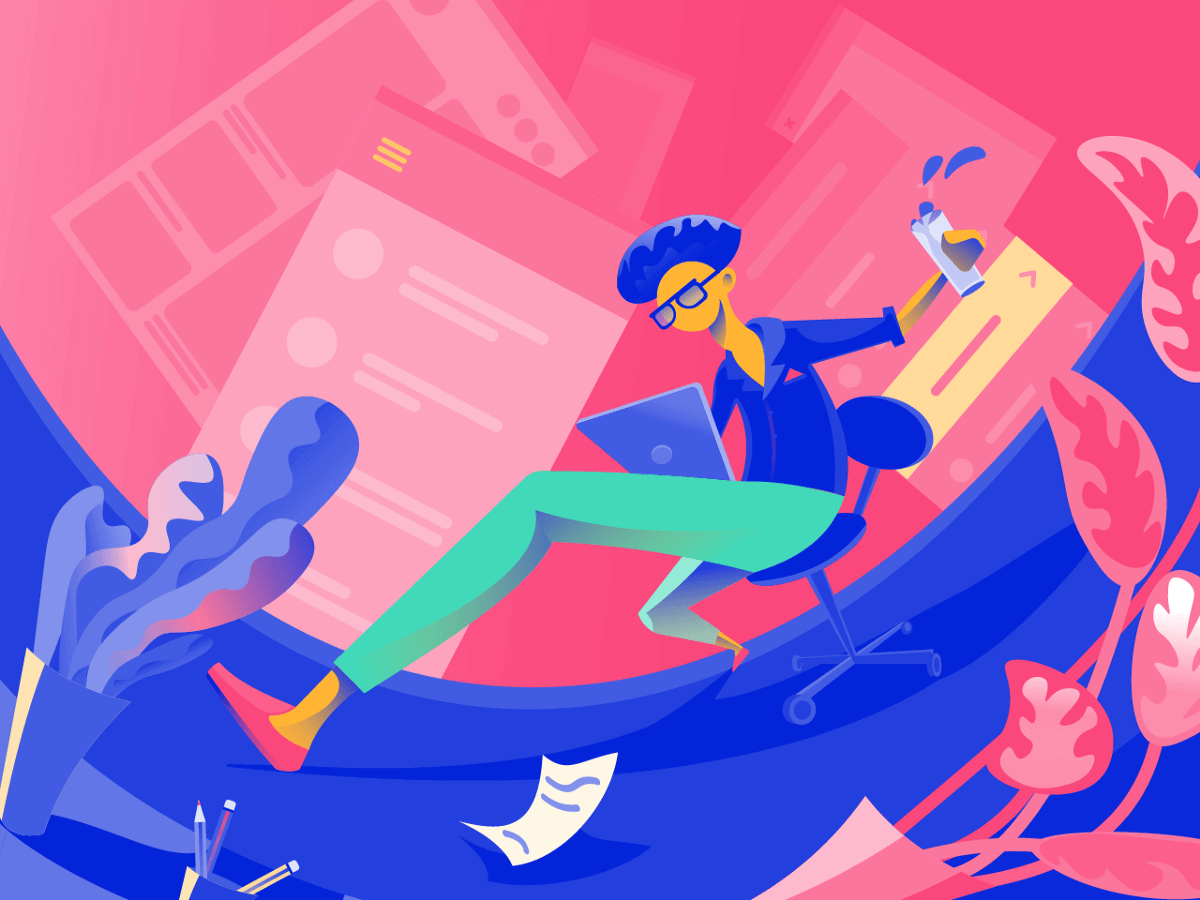
So, you’re set on a career in Tech and you’re considering Interactive Design as an option. It doesn’t matter if you are a complete beginner or a so-called “career switcher” who plans to change their professional field – this popular and lucrative role is open to anyone. Before you make your choice, though, you need to consider all the pros and cons of working in UI/UX design in order to assess the risks and determine if you really want to try your hands at it. We asked Alexander Voitenko, program director of the Interactive (UI/UX) Design course at DAN.IT and head of design at Trinetix about all the advantages and disadvantages of UI / UX. Alexander has been working in the field for over 12 years, and he had this to say:
“The profession of a UI designer is the most difficult one to explain to your parents, according to Business Insider research. Talking to people interested in the field, I often encounter questions such as: what exactly is UI/UX design, will I have to draw landscapes and logos? what does ‘a day in the life’ look like? In this article, we tried to answer the most common questions about the role of a designer in today’s tech world”.
Pros
Flexibility
You set your own workload yourself. Work as long as you want, where you want, and at a convenient time for you. The work schedule of a UI/UX designer is often very flexible, while the income depends on their own efforts. A big plus is that you can easily work remotely from anywhere in the world, it is enough to have a laptop + stable Internet at hand.
Career prospects
With a predicted year-on-year growth of 3%, the demand for qualified UI/UX designers doesn’t look like it’s slowing down anytime soon. The US, Canada, and UK lead the charts when it comes to stable employment for interactive designers.
Work with clients from around the world
Finding work as a designer outside your national borders is extremely easy with the advent of freelancer platforms and other remote work opportunities. Do you have a good portfolio and plenty of experience? All you need is a stable connection and a willingness to hone your creativity by working on completely different projects.
Try out diverse projects
UI / UX design gives you the opportunity to work with different businesses, even if you have never dealt with them before and have not delved into the specifics. You can design interfaces for vape stores, switch to work on a food delivery app, and then dive into a financial auditing system. The more clients you get, the more features and nuances you can experiment with and learn new things.
See the results of your work quickly
The UI/UX designer is responsible for the visual part of the project or its face. Developers can write code for days, but the result of their work is not obvious, and may not be appreciated by less code-savvy users. Therefore, the work of the designer is an optimal balance between exciting challenges and instant results.
Cons
Dealing with unreasonable expectations
Even if you try and coordinate your work with the customer at every stage, in the end it is impossible to say unequivocally how “good” your design is and how it will work in practice. In addition, even if there are no technical errors in the finished product, you are still not immune to the client’s “I don’t like this” or requests such as “make it simple and beautiful”.
Lack of traditional benefits
A flexible schedule is, on the one hand, good, but on the other, it has its pitfalls. Clients may contact you at any time so work routine, standard holidays, as well as pensions, and social care – designers are by and large deprived of all this.
Controversial points
Non-stop communication
Frequent communication with different people, even within the same project, can be exhausting. Sometimes the decision-makers change, new people come in and give you endless edits. To get through this and be able to defend your vision of your work against conflicting opinions, you need nerves of steel. Think carefully about whether you have this resource before going into Interactive Design.
Continuous learning
The profession of a UI/UX designer is changing very quickly, as is the Tech industry as a whole. What was in demand 3 years ago is already barely relevant now. Therefore, in order to stay afloat, to know all the latest technologies, to keep abreast of events, you need to study every day – scroll through other people’s portfolios, social networks, personal sites, and projects, track trends, attend online and offline events, etc. The feeling of constant competition and the race for recognition will never leave you – evaluate how much you like to be under such pressure and whether you are ready to spend a lot of time on self-improvement.
In conclusion, we should say that UI/UX design is definitely worth all the trouble as a profession. It will allow you to expand your horizons, acquire ever-new skills and reveal your creative vision of the world, plus you will be working to make it more convenient and pleasant for the user to navigate through websites, and applications. Also, don’t forget that the average salary of a UI / UX designer in the UK is 39K. So don’t let the long hours of work or the occasional picky client deter you – consider all the pros on cons on balance and make your choice!
